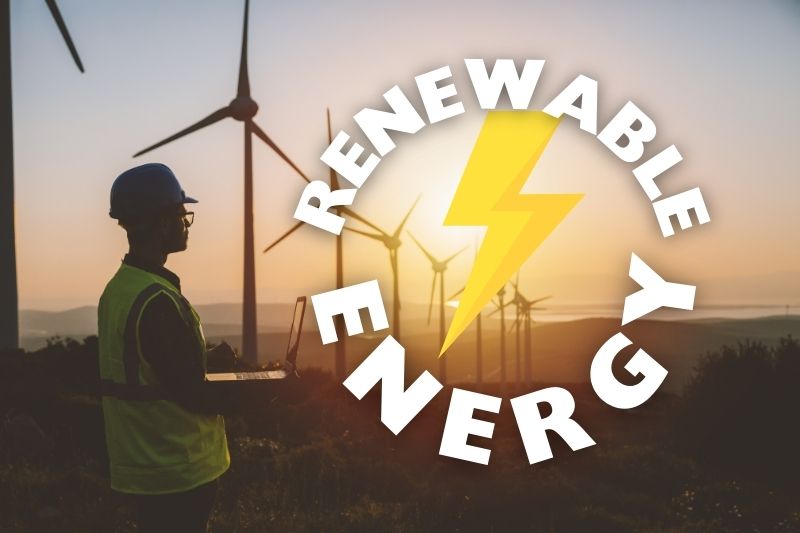The transition to renewable energy is a pivotal movement shaping the future of global energy consumption. With increasing concerns about climate change, finite fossil fuel resources, and the environmental impact of traditional energy sources, the shift to renewable energy is not just desirable but pretty damn essential.
Here are most important key points you need to know about this transition, detailed from the broad scope to specific impacts and innovations:
The Drivers Behind the Shift

The transition to renewable energy is primarily driven by the need to reduce greenhouse gas emissions, combat climate change, and decrease dependency on finite fossil fuel resources. Governments, businesses, and consumers are increasingly recognizing the environmental, economic, and health benefits of cleaner energy sources.
According to the International Energy Agency (IEA), renewable energy must account for 90% of new electricity generation by 2030 to meet climate goals. This drive is supported by global agreements like the Paris Agreement, which aims to limit global warming to below 2 degrees Celsius above pre-industrial levels.
The Main Types of Renewable Energy
Renewable energy comes from natural processes that are continuously replenished. The main types include:
- Solar Energy: Harvested using photovoltaic cells that convert sunlight into electricity. The efficiency of solar panels has increased significantly over the past decade, and costs have dropped by nearly 90% since 2010, according to the National Renewable Energy Laboratory (NREL).
- Wind Energy: Generated by wind turbines that capture wind to produce electricity. Wind energy is now one of the cheapest sources of new electricity, with costs falling 70% over the last decade.
- Hydropower: Uses the energy of moving water to generate electricity. It is one of the oldest and most established forms of renewable energy, providing around 16% of global electricity supply.
- Geothermal Energy: Utilizes heat from the Earth’s interior to produce energy. This source is particularly effective in regions with significant tectonic activity, such as Iceland and parts of the United States.
- Biomass Energy: Derived from organic materials, such as plant and animal waste, which are burned or processed to generate power. Biomass can also be converted into biofuels, providing a renewable alternative to gasoline and diesel.
Global Trends and Policies

Countries worldwide are implementing policies and setting ambitious targets to increase their share of renewable energy. The European Union aims to achieve at least 32% renewable energy consumption by 2030, and the U.S. has set a goal to reach 100% clean electricity by 2035.
China, the world’s largest emitter of greenhouse gases, is also making significant investments in renewable energy, aiming to reach carbon neutrality by 2060. These goals are supported by various policy instruments, including subsidies, tax incentives, and renewable energy mandates.
Technological Innovations

Advancements in technology are making renewable energy more efficient and affordable. Innovations include:
- Improved Solar Panels: Higher efficiency and lower costs have made solar power one of the fastest-growing energy sources. Technologies like perovskite solar cells promise even greater efficiency.
- Advanced Wind Turbines: Larger blades and more efficient designs have increased the capacity and lowered the cost of wind energy. Offshore wind farms are also expanding, offering vast potential due to stronger and more consistent winds at sea.
- Energy Storage Systems: Better batteries and storage solutions are crucial for balancing supply and demand. Lithium-ion batteries are the most common, but alternatives like flow batteries and solid-state batteries are emerging.
- Smart Grids: Enhanced grid infrastructure to integrate renewable energy sources seamlessly. Smart grids use digital technology to monitor and manage the production and distribution of electricity, improving reliability and efficiency.
Economic Impacts

The renewable energy sector is creating jobs and stimulating economic growth. According to the International Renewable Energy Agency (IRENA), renewable energy could support up to 42 million jobs globally by 2050. Investments in renewable energy infrastructure also spur economic development and reduce energy costs in the long term.
For instance, the solar industry alone employed over 3.8 million people globally in 2020, according to IRENA. Additionally, renewable energy projects often involve local communities, providing them with economic opportunities and fostering sustainable development.
Environmental Benefits
Transitioning to renewable energy significantly reduces pollution, greenhouse gas emissions, and the carbon footprint. Unlike fossil fuels, renewable energy sources produce little to no emissions, helping mitigate climate change and improve air quality.
The U.S. Environmental Protection Agency (EPA) estimates that shifting to renewable energy can prevent thousands of premature deaths annually by reducing air pollution. Moreover, renewable energy sources do not deplete finite natural resources, ensuring a sustainable supply for future generations.
Challenges and Barriers

Despite the benefits, several challenges hinder the widespread adoption of renewable energy:
- Intermittency: Renewable energy sources like solar and wind are weather-dependent and can be inconsistent. This requires robust energy storage and grid management solutions to ensure a reliable power supply.
- Initial Costs: High upfront costs for infrastructure and technology can be a barrier, although these costs are decreasing rapidly.
- Grid Integration: Upgrading existing grid infrastructure to accommodate new energy sources is complex and costly.
- Policy and Regulatory Hurdles: Inconsistent policies and regulatory frameworks across different regions can slow down the adoption of renewable energy. Coordinated policy efforts and international cooperation are crucial to overcoming these barriers.
Energy Storage

Energy storage is crucial for the renewable energy transition. Technologies like lithium-ion batteries, pumped hydro storage, and emerging solutions like hydrogen fuel cells help store excess energy and release it when needed, ensuring a stable energy supply.
According to the U.S. Department of Energy, energy storage capacity is expected to increase significantly, with storage deployments projected to grow from 1.4 gigawatts in 2020 to nearly 7.5 gigawatts by 2025. This growth is driven by declining costs and technological advancements, making energy storage a vital component of a reliable and resilient energy system.
Consumers

Consumers benefit from the renewable energy transition through:
- Lower Energy Bills: As technology advances and economies of scale are realized, renewable energy becomes more cost-effective. For example, solar power costs have decreased by 89% over the past decade, making it cheaper than many traditional energy sources.
- Energy Independence: Reduced reliance on imported fuels and greater control over energy production. This can enhance national security and provide resilience against global energy market fluctuations.
- Health Benefits: Cleaner air and reduced pollution lead to better public health outcomes. A study published in the journal Nature Climate Change found that transitioning to renewable energy could prevent up to 7 million premature deaths annually by reducing air pollution.

